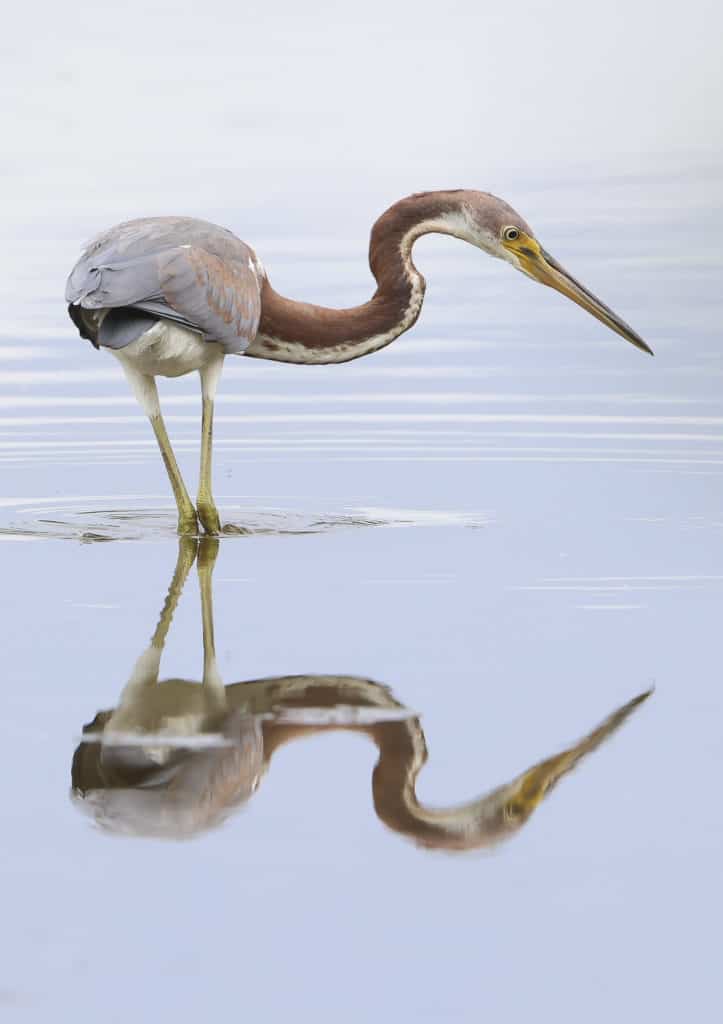Creature Feature

Tricolored Herons in Grasonville
By Wayne Bierbaum
I know of several areas where, as summer starts to end, large flocks of wading birds gather to feed on small fish navigating shallow water. As the tide goes out and the ponds start to drain, Bombay Hook National Wildlife Refuge in Delaware attracts herons and egrets by the hundreds. There are certain spots along the Maple Dam area of Blackwater National Wildlife Refuge in Dorchester County where wading birds flock to grab fish in the shallows. The marshy area at North Beach frequently has flocks of long-legged birds and three years ago even had a rare spoonbill join in the feeding. This year, it seems another area has became a bird magnet, the Chesapeake Bay Environmental Center (CBEC).
The Wildfowl Trust of North America Inc. purchased Grasonville’s Horsehead Island in 1981 for conservation and educational purposes. In 2003, it was renamed the CBEC. Because the area has many unusual birds including overwintering warblers, I visit there several times a year. In fact, I recently attended a really nice wedding there as well as a Dan Haas concert.
There is a pond in the middle of the property that has an osprey nest and usually has some ducks and geese. This summer, the water started to slowly drain from the pond. As the pond shrank, fish became concentrated and increasing numbers of wading birds started showing up. I would guess that birds flying by could see the feeding activity and then fly in.
By the time I visited in mid-August there were probably a hundred wading birds. Most were snowy egrets but great egrets, great blue herons, green herons, yellowlegs, killdeer and assorted sandpipers joined the feeding frenzy. An unusual summer visitor was also present, the tricolored heron.
I have found single tricolored herons at other wildlife areas in Maryland but as I sat on a bench at the edge of the CBEC pond I counted 14 actively feeding in the muddy pond. The tricolored herons usually range from Florida to North Carolina but over the last five years they have been seen all the way to New York.
The herons are a little taller than two feet. The non-breeding and juvenile birds have yellow beaks and breeding adults have bluish beaks. The beaks are long pointed tools used to spear or just grab their prey. They are multicolored with rusty red, blue and purple. Plus they have a white belly. The herons prefer salt or brackish water areas but can be found around fresh water. The pond at CBEC is brackish.
They are fun to watch because they have an active feeding style. Trotting awkwardly, they will run around chasing minnows. The birds also will spread their wings and sweep them forward like a cloak. That creates shade where either the minnows are attracted or, with less bright reflection, are more visible.
Tricolored herons are generally not found in large groups and rarely around here so the congregation at Chesapeake Bay Environmental Center was unusual. As the earth has warmed, many southern bird species have started to move north and this is probably another example. This year brought more unusual species than the last like wood storks, spoonbills, white ibis, limpkin and kites. I wonder what next year will bring.
